Suzana Pereira Nunes, Klaus-Viktor Peinemann3527284850, 9783527284856
Table of contents :
Chemical Micro Process Engineering……Page 4
Contents……Page 8
Preface……Page 26
Abbreviations and Symbols……Page 28
1.1.1 ‘Mixing Fields’, a Demand Towards a more Knowledge-based Approach – Room for Micro Mixers?……Page 34
1.1.2 Drivers for Mixing in Micro Spaces……Page 35
1.1.3 Mixing Principles……Page 36
1.1.4 Means for Mixing of Micro Spaces……Page 37
1.1.5 Generic Microstructured Elements for Micro-mixer Devices……Page 38
1.1.6 Experimental Characterization of Mixing in Microstructured Devices……Page 39
1.1.7 Application Fields and Types of Micro Channel Mixers……Page 40
1.2.1 Electrohydrodynamic Translational Mixing……Page 41
1.2.1.1 Mixer 1 [M 1]: Electrohydrodynamic Micro Mixer (I)……Page 42
1.2.1.2 Mixer 2 [M 2]: Electrohydrodynamic Micro Mixer (II)……Page 43
1.2.1.3 Mixer 3 [M 3]: Electrokinetic Instability Electroosmotic Flow Micro Mixer, First-generation Device……Page 44
1.2.1.4 Mixer 4 [M 4]: Electrokinetic Instability Electroosmotic Flow Micro Mixer, Second-generation Device……Page 45
1.2.1.5 Mixer 5 [M 5]: Electrokinetic Instability Micro Mixer by Zeta-potential Variation……Page 46
1.2.1.7 Mixing Characterization Protocols/Simulation……Page 47
1.2.1.8 Typical Results……Page 49
1.2.2.1 Mixer 7 [M 7]: Coupled Electrorotation Micro Mixer……Page 57
1.2.3 Chaotic Electroosmotic Stirring Mixing……Page 58
1.2.3.1 Mixer 8 [M 8]: Chaotic Electroosmotic Micro Mixer……Page 59
1.2.3.3 Typical Results……Page 60
1.2.4.1 Mixer 9 [M 9]: Magnetohydrodynamic Micro Mixer……Page 64
1.2.4.3 Typical Results……Page 65
1.2.5 Air-bubble Induced Acoustic Mixing……Page 67
1.2.5.2 Mixer 11 [M 11]: Acoustic Microstreaming Micro Mixer, Version 2……Page 68
1.2.5.3 Mixing Characterization Protocols/Simulation……Page 69
1.2.5.4 Typical Results……Page 70
1.2.6 Ultrasonic Mixing……Page 74
1.2.6.2 Mixing Characterization Protocols/Simulation……Page 75
1.2.6.3 Typical Results……Page 76
1.2.7 Moving- and Oscillating-droplet Mixing by Electrowetting……Page 77
1.2.7.1 Mixer 14 [M 14]: Moving- and Oscillating-droplet Micro Mixer……Page 78
1.2.7.2 Mixing Characterization Protocols/Simulation……Page 80
1.2.7.3 Typical Results……Page 81
1.2.8.1 Mixer 15 [M 15]: Dielectrophoretic Droplet Micro Mixer……Page 86
1.2.8.4 Mixing Characterization Protocols/Simulation……Page 87
1.2.8.5 Typical Results……Page 88
1.2.9.1 Mixer 18 [M 18]: Structured Surface Bulge Micro Mixer……Page 90
1.2.9.3 Typical Results……Page 91
1.2.10.1 Mixer 19 [M 19]: Valveless Micropumping Micro Mixer……Page 92
1.2.10.2 Mixing Characterization Protocols/Simulation……Page 93
1.2.11.1 Mixer 20 [M 20]: Membrane-actuated Micropumping Micro Mixer……Page 94
1.2.11.3 Typical Results……Page 95
1.2.12 Micro Impeller Mixing……Page 96
1.2.12.2 Mixer 22 [M 22]: Ferromagnetic Sphere-chain Micro Mixer……Page 97
1.2.12.4 Typical Results……Page 98
1.3.1 Vertical Y- and T-type Configuration Diffusive Mixing……Page 99
1.3.1.3 Mixer 26 [M 26]: Y-type Micro Mixer with Venturi Throttle……Page 100
1.3.1.5 Mixer 28 [M 28]: T-type Micro Mixer with Straight Path……Page 101
1.3.1.6 Mixing Characterization Protocols/Simulation……Page 102
1.3.1.7 Typical Results……Page 103
1.3.2.1 Mixer 29 [M 29]: Unfocused Horizontally Bi-laminating Y-feed Micro Mixer……Page 112
1.3.2.2 Mixing Characterization Protocols/Simulation……Page 113
1.3.2.3 Typical Results……Page 114
1.3.3.1 Mixer 30 [M 30]: Capillary-force, Self-filling Bi-laminating Micro Mixer……Page 117
1.3.3.2 Mixing Characterization Protocols/Simulation……Page 118
1.3.4.1 Mixer 31 [M 31]: Cross-shaped Micro Mixer with Static Mixing Elements……Page 119
1.3.4.3 Typical Results……Page 120
1.3.5.1 Mixer 32 [M 32]: Hydrodynamic Focusing Cross-injection Micro Mixer……Page 123
1.3.5.3 Typical Results……Page 124
1.3.6 Geometric Focusing Bi-laminating Mixing……Page 126
1.3.6.3 Typical Results……Page 127
1.3.7.1 Mixer 34 [M 34]: Bi-laminating Microfluidic Network……Page 128
1.3.7.2 Experimental Characterization Protocols/Simulation……Page 129
1.3.8 Bifurcation Multi-laminating Diffusive Mixing……Page 131
1.3.8.1 Mixer 35 [M 35]: Bifurcation Multi-laminating Micro Mixer……Page 132
1.3.8.2 Mixing Characterization Protocols/Simulation……Page 133
1.3.8.3 Typical Results……Page 134
1.3.9 Interdigital Multi-laminating Diffusive Mixing (Normal and Focusing)……Page 135
1.3.9.1 Mixer 36 [M 36]: Unfocused Interdigital Multi-laminating Micro Mixer with Co-flow Injection Scheme (I), ‘Rectangular Mixer’……Page 138
1.3.9.2 Mixer 37 [M 37]: Interdigital Vertically Multi-laminating Micro Mixer with Co-flow Injection Scheme (II)……Page 139
1.3.9.3 Mixer 38 [M 38]: Interdigital Horizontally Bi-laminating Micro Mixer with Cross-flow Injection Scheme, Reference Case to [M 37]……Page 140
1.3.9.4 Mixer 39 [M 39]: Interdigital Horizontally Multi-laminating Micro Mixer with Co-flow Injection Scheme……Page 141
1.3.9.5 Mixer 40 [M 40]: Interdigital Vertically Multi-laminating Micro Mixer with Counter-flow Injection Scheme – ‘3-D Slit Mixer’……Page 143
1.3.9.6 Mixer 41 [M 41]: Interdigital Vertically Multi-laminating Micro Mixer with Counter-flow Injection Scheme, 10-fold Array……Page 145
1.3.9.7 Mixer 42 [M 42]: Interdigital Vertically Multi-laminating Micro Mixer with ‘Slit-type’ Focusing – ‘Plane Slit Mixer’……Page 146
1.3.9.9 Mixer 44 [M 44]: Interdigital Vertically Multi-laminating Micro Mixer with Optimized Triangular Focusing – ‘SuperFocus’……Page 147
1.3.9.10 Mixer 45 [M 45]: Interdigital Vertically Multi-laminating Micro Mixer with Triangular Focusing Zone (II)……Page 149
1.3.9.11 Mixer 46 [M 46]: Interdigital Vertically Multi-laminating Micro Mixer with Flow-re-directed Focusing Zone……Page 150
1.3.9.12 Mixing Characterization Protocols/Simulation……Page 151
1.3.9.13 Typical Results……Page 154
1.3.10 Interdigital Concentric Consecutive Mixing……Page 172
1.3.10.1 Mixer 47 [M 47]: Interdigital Consecutive Micro Mixer, StarLam300……Page 173
1.3.10.3 Typical Results……Page 175
1.3.11 Cyclone Laminating Mixing……Page 177
1.3.11.2 Mixer 50 [M 50]: Cyclone Laminating Micro Mixer, Tangential Injection (II)……Page 178
1.3.11.3 Mixer 51 [M 51]: Cyclone Laminating Micro Mixer, Cross-flow Injection……Page 179
1.3.11.5 Typical Results……Page 180
1.3.12 Concentric Capillary-in-capillary and Capillary-in-tube Mixing……Page 182
1.3.12.2 Mixer 53 [M 53]: Capillary-in-tube Micro Mixer……Page 183
1.3.13 Droplet Separation-layer Mixing……Page 184
1.3.13.1 Mixer 54 [M 54]: Concentric Separation-layer Interdigital Micro Mixer……Page 186
1.3.13.3 Mixing Characterization Protocols/Simulation……Page 187
1.3.13.4 Typical Results……Page 189
1.3.14 Split-and-recombine Mixing……Page 195
1.3.14.1 Mixer 56 [M 56]: Möbius-type Split-and-recombine Micro Mixer……Page 196
1.3.14.3 Mixer 58 [M 58]: Fork-element Split-and-recombine Micro Mixer……Page 197
1.3.14.4 Mixer 59 [M 59]: Stack Split-and-recombine Micro Mixer……Page 199
1.3.14.6 Mixer 61 [M 61]: Multiple-collisions Split-and-recombine Micro Mixer……Page 200
1.3.14.7 Mixer 62 [M 62]: Separation-plate Split-and-recombine Micro Mixer……Page 201
1.3.14.8 Mixing Characterization Protocols/Simulation……Page 202
1.3.14.9 Typical Results……Page 203
1.3.15 Rotation-and-break-up Mixing……Page 208
1.3.15.2 Mixer 64 [M 64]: Rotation-and-break-up Micro Mixer (II)……Page 209
1.3.15.4 Typical Results……Page 210
1.3.16.1 Mixer 65 [M 65]: Micro-plume Injection Micro Mixer……Page 213
1.3.16.3 Typical Results……Page 214
1.3.17.3 Typical Results……Page 215
1.3.18.1 Mixer 67 [M 67]: Y-type Micro Mixer with Zig-zag or Straight Channel……Page 216
1.3.18.2 Mixer 68 [M 68]: T-type Micro Mixer with Zig-zag or Straight Channel……Page 217
1.3.18.4 Typical Results……Page 218
1.3.19.1 Mixer 69 [M 69]: Curved Channel Micro Mixer……Page 224
1.3.19.2 Mixer 70 [M 70]: Meander Channel Micro Mixer……Page 225
1.3.19.3 Mixer 71 [M 71]: 3-D L-shaped Serpentine Micro Mixer……Page 226
1.3.19.4 Mixing Characterization Protocols/Simulation……Page 227
1.3.19.5 Typical Results……Page 228
1.3.20 Distributive Mixing with Traditional Static Mixer Designs……Page 236
1.3.20.2 Mixer 73 [M 73]: Helical Elements Micro Mixer……Page 237
1.3.20.4 Typical Results……Page 238
1.3.21.1 Mixer 74 [M 74]: Non-grooved Channel – Reference Case……Page 239
1.3.21.3 Mixer 76 [M 76]: Oblique, Asymmetrically Grooved Micro Mixer – Staggered Herringbone Mixer (SHM)……Page 240
1.3.21.5 Mixer 78 [M 78]: Diagonal-grooved Micro Mixer……Page 241
1.3.21.7 Typical Results……Page 242
1.3.22.1 Mixer 79 [M 79]: Twisted Surface Micro Mixer……Page 249
1.3.22.2 Mixing Characterization Protocols/Simulation……Page 250
1.3.22.3 Typical Results……Page 251
1.3.23.1 Mixer 80 [M 80]: Barrier-embedded Micro Mixer with Slanted Grooves……Page 252
1.3.23.2 Mixer 81 [M 81]: Barrier-embedded Micro Mixer with Helical Elements……Page 253
1.3.23.4 Typical Results……Page 255
1.3.24.3 Typical Results……Page 259
1.3.25 Time-pulsing Mixing……Page 260
1.3.25.2 Mixer 84 [M 84]: Time-pulsing Cross-flow Micro Mixer (II)……Page 261
1.3.25.3 Mixing Characterization Protocols/Simulation……Page 262
1.3.25.4 Typical Results……Page 263
1.3.26 Bimodal Intersecting Channel Mixing……Page 269
1.3.26.2 Mixing Characterization Protocols/Simulation……Page 271
1.3.26.3 Typical Results……Page 272
1.3.27 Micro-bead Interstices Mixing……Page 274
1.3.27.3 Typical Results……Page 275
1.3.28 Recycle-flow Coanda-effect Mixing Based on Taylor Dispersion……Page 276
1.3.28.1 Mixer 87 [M 87]: Coanda-effect Micro Mixer with Tesla Structures……Page 278
1.3.28.2 Mixing Characterization Protocols/Simulation……Page 280
1.3.28.3 Typical Results……Page 282
1.3.29.1 Mixer 88 [M 88]: Recycle-flow Micro Mixer……Page 284
1.3.29.3 Typical Results……Page 285
1.3.30.1 Mixer 89 [M 89]: Cantilever-valve Injection Micro Mixer……Page 287
1.3.30.2 Mixing Characterization Protocols/Simulation……Page 288
1.3.31 Serial Diffusion Mixer for Concentration Gradients……Page 289
1.3.31.1 Mixer 90 [M 90]: Serial-diffusion Micro Mixer for Concentration Gradients……Page 290
1.3.31.3 Typical Results……Page 291
1.3.32.1 Mixer 91 [M 91]: Double T-junction Micro Mixer……Page 293
1.3.32.2 Mixing Characterization Protocols/Simulation……Page 294
1.3.33 Jet Collision Turbulent or Swirling-flow Mixing……Page 295
1.3.33.2 Mixer 93 [M 93]: Y-Type Collision Impinging Jet Micro Mixer……Page 296
1.3.33.3 Mixer 94 [M 94]: Impinging Jet Array Micro Mixer……Page 297
1.3.33.4 Mixing Characterization Protocols/Simulation……Page 299
1.3.33.5 Typical Results……Page 300
References……Page 305
2.1.1 Power Range and Applications……Page 314
2.1.2 Overall Assembly……Page 315
2.2.1 Costs……Page 317
2.2.2 Efficiency……Page 318
2.2.3 Start-up Time……Page 319
2.2.7 Lifetime……Page 320
2.4 Micro Structured Test Reactors for Fuel Processing……Page 321
2.4.1 Methanol Steam Reforming (MSR)……Page 323
2.4.1.3 Methanol Steam Reforming 3 [MSR 3]: Electrically Heated Stack-like Reactor……Page 326
2.4.1.4 Methanol Steam Reforming 4 [MSR 4]: Externally Heated Stack-like Reactor……Page 328
2.4.1.5 Methanol Steam Reforming 5 [MSR 5]: Electrically Heated Stack-like Reactor……Page 330
2.4.1.6 Methanol Steam Reforming 6 [MSR 6]: Electrically Heated Screening Reactor……Page 331
2.4.1.7 Development of Catalyst Coatings for Methanol Steam Reforming in Micro Channels……Page 332
2.4.2 Autothermal Methanol Reforming……Page 337
2.4.2.2 Autothermal Methanol Reforming 2 [AMR 2]: Micro Structured String Reactor for Autothermal Methanol Reforming……Page 338
2.4.3.1 Methane Steam Reforming……Page 340
2.4.3.3 Hydrocarbon Reforming 1 [HCR 1]: Micro Structured Monoliths for Partial Methane Oxidation……Page 341
2.4.3.4 Hydrocarbon Reforming 2 [HCR 2]: Partial Methane Oxidation Heat Exchanger/Reactor……Page 344
2.4.3.6 Hydrocarbon Reforming 4 [HCR 4]: Compact Membrane Reactor for Autothermal Methane Reforming……Page 345
2.4.3.7 Hydrocarbon Reforming 5 [HCR 5]: Sandwich Reactors Applied to Propane Steam Reforming……Page 347
2.4.3.8 Hydrocarbon Reforming 6 [HCR 6]: Micro Structured Monoliths for Partial Propane Oxidation and Autothermal Reforming……Page 350
2.4.3.9 Catalyst Development for the Autothermal Reforming of Isooctane and Gasoline in Micro Structures……Page 352
2.5.1.1 Mechanistic Investigations of Hydrogen Combustion……Page 353
2.5.1.2 Catalytic Hydrogen Combustion 1 [CHC 1]: Single-channel Micro Reactor for Catalytic Hydrogen Combustion……Page 354
2.5.1.4 Catalytic Hydrogen Combustion 3 [CHC 3]: Combined Mixer/Cross-flow Combustor/Heat Exchanger for Determination of the Kinetics of Hydrogen Oxidation……Page 355
2.5.1.5 Catalytic Hydrogen Combustion 4 [CHC 4]: Cross-flow Combustor/Heat Exchanger for Hydrogen Oxidation……Page 357
2.5.1.6 Catalytic Hydrogen Combustion 5 [CHC 5]: Combination of a Mixer, a Cross-flow Combustor/Heat Exchanger and a Heat Exchanger for Product Quenching for Hydrogen Oxidation……Page 359
2.5.3.1 Catalytic Hydrocarbon Combustion 1 [CHCC 1]: Ceramic Micro Reactor for Butane Combustion……Page 361
2.5.3.2 Catalytic Hydrocarbon Combustion 2 [CHCC 2]: MEMS System for Butane Combustion……Page 362
2.5.4.1 Modeling of Homogeneous Methane Combustion in Micro Channels……Page 365
2.5.4.2 Homogeneous Combustion in Micro Channels 1 [HCC 1]: Homogeneous Hydrogen Combustion in a Micro Combustor……Page 366
2.5.4.3 Homogeneous Combustion in Micro Channels 2 [HCC 2]: Homogeneous Hydrogen Combustion in a 2-D Micro Combustor……Page 367
2.6.1 Water-gas Shift……Page 368
2.6.1.1 Simulation of the Effect of Integrating Heat-exchange Capabilities into Water-gas Shift Reactors……Page 369
2.6.1.3 Water-gas Shift 1 [WGS 1]: Stack-like Reactor Applied to Water-gas Shift Testing……Page 370
2.6.1.4 Water-gas Shift 2 [WGS 2]: Stack-like Reactor Applied to Water-gas Shift……Page 372
2.6.1.5 Water-gas Shift 3 [WGS 3]: Sandwich-type Reactor ([HCR 4]) Applied to Water-gas Shift Catalyst Testing……Page 374
2.6.2 Preferential Carbon Monoxide Oxidation……Page 375
2.6.2.1 Preferential Carbon Monoxide Oxidation 1 [PrOx 1]: MEMS-like Reactor Applied to Studies of the PrOx Reaction in Micro Channels……Page 377
2.6.2.3 Preferential Carbon Monoxide Oxidation 3 [PrOx 3]: Integrated Micro Structure Heat Exchanger for PrOx Applied in a 20 kW Fuel Processor……Page 379
2.6.2.4 Preferential Carbon Monoxide Oxidation 4 [PrOx 4]: Stack-like Reactor Applied to PrOx……Page 381
2.6.2.5 Preferential Carbon Monoxide Oxidation 5 [PrOx 5]: Integrated Heat Exchanger/Reactor for PrOx……Page 383
2.6.2.6 Preferential Carbon Monoxide Oxidation 6 [PrOx 6]: Stack-like Reactor Applied to PrOx……Page 384
2.6.3 Micro Structured Membranes for CO Clean-up……Page 385
2.6.3.2 Micro Structured Membranes for CO Clean-up 2 [MMem 2]: Palladium Membrane Micro Reactor……Page 386
2.6.3.5 Micro Structured Membranes for CO Clean-up 5 [MMem 5]: Sputtered Tantalum Membrane……Page 388
2.7 Integrated Micro Structured Reactor Fuel Processing Concepts……Page 389
2.7.1.1 Parametric Study for Coupling Highly Exothermic and Endothermic Reactions……Page 390
2.7.1.2 Co-current Operation of Combined Meso-scale Heat Exchangers and Reactors for Methanol Steam Reforming……Page 391
2.7.1.3 Feasibility Study for Combined Methane Oxidation/Steam Reforming in an Integrated Heat Exchanger……Page 392
2.7.2.2 Integrated Systems Fuelled by Methanol 2 [ISMol 2]: Integrated Methanol Fuel Processor (Motorola)……Page 393
2.7.2.3 Integrated Systems Fuelled by Methanol 3 [ISMol 3]: Integrated Autothermal Methanol Fuel Processor (Ballard)……Page 394
2.7.2.4 Integrated Systems Fuelled by Methanol 4 [ISMol 4]: Integrated Methanol Steam Reforming Fuel Processor for 20 kW Power Output……Page 396
2.7.2.5 Integrated Systems Fuelled by Methanol 5 [ISMol 5]: Integrated Methanol Fuel Processor for 100 W Power Output……Page 397
2.7.2.6 Integrated Systems Fuelled by Methanol 6 [ISMol 6]: Integrated Methanol Fuel Processor for 15 W Power Output……Page 398
2.7.2.7 Integrated Systems Fuelled by Methanol 7 [ISMol 7]: Integrated Methanol Fuel Processor for the Sub-watt Power Range……Page 399
2.7.2.8 Integrated Systems Fuelled by Methanol 8 [ISMol 8]: Integrated Reformer/Combustor Reactor……Page 400
2.7.2.10 Integrated Systems Fuelled by Methanol 10 [ISMol 10]: Micro Integrated Heat Exchanger/Reactor for Methanol Steam Reforming……Page 401
2.7.2.11 Integrated Systems Fuelled by Methanol 11 [ISMol 11]: Micro Integrated Heat Exchanger/Fixed-bed Reactor for Methanol Steam Reforming……Page 402
2.7.2.12 Integrated Systems Fuelled by Methanol 12 [ISMol 12]: Integrated Methanol Evaporator and Hydrogen Combustor……Page 403
2.7.2.13 Integrated Systems Fuelled by Methanol 13 [ISMol 13]: Integrated Methanol Evaporator and Methanol Reformer……Page 404
2.7.3.3 Design Study for the Multi-stage Adiabatic Mode……Page 405
2.7.4.1 Integrated Systems Running on Various Fuels 1 [ISV 1]: Integrated Evaporator/Burner Device for Automotive Applications……Page 407
2.7.4.3 Integrated Systems Running on Various Fuels 3 [ISV 3]: Combined System of Integrated Reformer/Heat Exchanger and Evaporator/Heat Exchanger Devices for Automotive Applications……Page 408
2.7.4.4 Integrated Systems Running on Various Fuels 4 [ISV 4]: Integrated Evaporator/Reformer/Burner Device for Automotive Applications……Page 410
2.7.4.5 Integrated Systems Running on Various Fuels 5 [ISV 5]: Combined Evaporator/Reformer/Burner Device……Page 412
2.7.4.7 Integrated Systems Running on Various Fuels 7 [ISV 7]: Integrated Steam Reformer/Heat Exchanger for Isooctane……Page 413
2.8 Comparison of Micro Structured Fuel Processor Systems with Conventional Technologies……Page 414
2.8.1.1 Comparison on a Larger Scale Between a Shell and Tube Heat Exchanger, a Porous Metal Structure and a Plate and Fin Heat Exchanger Applied to Preferential CO Oxidation……Page 415
2.8.1.4 Comparison Between a Micro Structured Monolith and Conventional Monoliths Applied to Partial Oxidation of Methane……Page 416
2.8.1.6 Comparison Between Coated Micro Structures and a Conventional Monolith Applied to Preferential Oxidation of Carbon Monoxide……Page 417
2.9.1 Materials Applied……Page 418
2.9.2.2 Electrodischarge Machining……Page 419
2.9.2.5 Embossing……Page 420
2.9.3.1 Gaskets……Page 421
2.9.3.3 Laser Welding……Page 422
2.9.3.5 Diffusion Bonding……Page 423
2.9.3.7 Sintering……Page 424
2.10.2 Wash Coating……Page 425
2.10.4 Sol–Gel Coating……Page 428
2.10.5 Anodic Oxidation……Page 429
2.10.6 Electrophoretic Deposition……Page 430
2.10.8 Introduction of ZSM-5 Zeolite into Micro Channels……Page 431
References……Page 433
3.1.1 Catalyst Screening During the Last Decade……Page 442
3.1.2.3 Automated Measurement and Analysis……Page 443
3.1.2.5 In Situ Surface Science Studies to Provide Micro Kinetics……Page 444
3.1.3.2 Analytical Expressions of Laminar Flow for Consolidation of Screening Experiments……Page 446
3.1.3.5 Exploration of Novel Reaction Regimes by Micro-space Operation……Page 447
3.1.4 Structure of the Contents of the Chapter……Page 448
3.2.1.1 Manual Impregnation Procedure……Page 449
3.2.1.2 Semi-automated Impregnation Method……Page 450
3.2.1.4 Catalyst Pellet Preparation……Page 451
3.2.1.5 Parallel Sputter Coating……Page 452
3.3.1 Reactor 1 [R 1]: Agitated Mini-autoclaves……Page 457
3.3.2 Reactor 2 [R 2]: Agitated Mini-autoclaves……Page 458
3.3.3 Reactor 3 [R 3]: Agitated Mini-autoclaves……Page 460
3.3.5 Catalyst Screening by Multistep Synthesis……Page 461
3.4.1.1 Reactor 4 [R 4]: Stacked Platelet Screening System……Page 464
3.4.1.2 Reactor 5 [R 5]: 10-fold Parallel Reactor with Exchangeable Flow Distribution Section……Page 467
3.4.1.3 Reactor 6 [R 6]: Micro Reactor for Steam Reforming Catalyst Testing……Page 470
3.4.1.4 Reactor 7 [R 7]: High-throughput Micro Reactor with Parallel Micro Compartments……Page 471
3.4.1.5 Reactor 8 [R 8]: Modular Screening Reactor Unit……Page 473
3.4.2.2 Reactor 10 [R 10]: Chip-based Catalytic Reactor……Page 475
3.4.2.3 Reactor 11 [R 11]: Chemical Processing Microsystem……Page 477
3.4.3.1 Reactor 12 [R 12]: Alumina Tablets Equipped Parallel Gas-phase Reactor……Page 479
3.4.3.2 Reactor 13 [R 13]: Ceramic Monolith Reactor……Page 482
3.4.3.3 Reactor 14 [R 14]: High-pressure Fixed-bed Reactor……Page 484
3.4.3.4 Reactor 15 [R 15]: Multiple-bead Pellet-type Catalyst Carrier Reactor……Page 485
3.4.4.1 Infrared/Thermography Monitored Screening Reactor……Page 486
3.4.4.2 Reactor 16 [R 16]: Catalyst Filled Borings Reactor……Page 487
3.4.4.3 Reactor 17 [R 17]: Sputtered Catalyst Spots on Quartz Wafer Reactor……Page 490
3.4.4.5 Reactor 19 [R 19]: Photochemical Active Catalyst Parallel Screening Reactor……Page 492
3.4.4.7 Reactor 21 [R 21]: 64-Channel Tubular Disk Fixed-bed Reactor……Page 493
3.4.4.8 Reactor 22 [R 22]: The Microstructured Titer Plate Reactor Concept……Page 494
3.4.4.9 Physical Parameter Screening Reactor……Page 502
3.5.1 Transient Operations in Microstructured Gas-phase Reactors……Page 503
3.5.1.1 Reactor 23 [R 23]: Microstructured Titer Plate Transient Reactor Concept……Page 504
3.5.2.1 Reactor 24 [R 24]: High-throughput Gas/Liquid and Liquid/Liquid Dynamic Sequential Screening Reactor……Page 510
3.5.2.2 Multi-port Valves, Injection Valves and Sensors……Page 513
3.6 Computational Evaluation Methods……Page 516
3.6.1 Evaluations Following Biological Means……Page 517
3.6.2 Numerical Evaluation Methods……Page 520
3.6.3 Kinetics Derived from Signal Dispersion……Page 522
References……Page 531
4.1 Micro Reactor or Micro Structured Reactor Plant (MRP)……Page 538
4.2 Applicable Principles for Micro Structured Reactor Plant (MRP) Design……Page 540
4.2.1 Miniplant Technology – A Model for the Micro Structured Reactor Plant Concept……Page 543
4.2.3 Design Problems of Chemical Micro Structured Reactor Plants……Page 544
4.3 Process Conception and Economics……Page 548
4.3.1 Market Study and Availability of Micro Structured Reactors……Page 549
4.3.2 Pilot Study……Page 550
4.4 Early Concepts for Micro Structured Reactor Plant Design……Page 551
4.4.1.1 Reduction of Process Complexity for Distributed Chemical Manufacture……Page 552
4.4.1.2 Historical Analysis of Chemical Plant Development……Page 553
4.4.1.4 Supply-chain Systems……Page 554
4.4.2 Reactor 1 [R 1]: Concept for an HCN Miniplant……Page 555
4.5 Fluidic and Electrical Interconnects – Device-to-device and Device-to-world……Page 556
4.5.1 Reactor 3 [R 3]: Fluidic Manifold Concept – Micro Structured Reactor-to-micro Structured Reactor……Page 557
4.5.3 Reactor 5 [R 5]: Specially High-pressure Fluidic Interconnect – Chip-to-chip……Page 558
4.5.4 Reactor 6 [R 6]: Specially Fluidic Sequencing Interconnect – Chip-to-world……Page 560
4.5.5 Reactor 7 [R 7]: Electrical Interconnect for Fluid Driving – Chip-to-world……Page 562
4.5.6 Reactor 8 [R 8]: Electrical Integrated Circuit Interconnect (ASIC) – Chip-to-world……Page 565
4.6 Table-top Laboratory-scale Plants……Page 566
4.6.1 Reactor 9 [R 9]: CPC Table-top Reactors……Page 567
4.6.2 Reactor 10 [R 10]: Microinnova ‘Chemical Production Anywhere’ Concept……Page 571
4.6.3 Reactor 11 [R 11]: Microinnova ‘Lab Experiment Toolbox’ Concept……Page 572
4.6.4 Reactor 12 [R 12]: Mikroglas Chemtech Micro Reaction System ‘MikroSyn’……Page 573
4.6.5 Reactor 13 [R 13]: Modular Micro Reaction System FAMOS (Fraunhofer-Allianz Modulares Mikroreaktionssystem)……Page 575
4.6.6 Reactor 14 [R 14]: EM Modular Microreaction System (Ehrfeld Mikrotechnik)……Page 577
4.6.7 Reactor 15 [R 15]: Integrated Chemical Synthesizer……Page 579
4.6.8 Reactor 16 [R 16]: Integrated Micro Laboratory Disk Synthesizer……Page 582
4.6.10 Reactor 18 [R 18]: The Micro Structured Reactor Backbone Interface Concept……Page 584
4.6.10.1 The Backbone Interface Concept……Page 585
4.6.10.2 Case Study 1 [C 1]: Physical Characterization of the Set-up for an Enantioselective Synthesis……Page 588
4.6.10.3 Case Study 2 [C 2]: Chemical Characterization of the Backbone Using the Sulfonation of Toluene with Gaseous SO(3)……Page 592
4.7.1 Reactor 19 [R 19]: Micro Structured Reactor – Miniplant Hybrid Combination……Page 595
4.7.2 Reactor 20 [R 20]: Hybrid Methanol Steam Reformer……Page 596
4.7.3 Reactor 21 [R 21]: Hybrid Set-up of Mini-scaled and Micro Structured Components Inside a Reactor Housing……Page 598
4.8.1 Reactor 22 [R 22]: Catalytic Automobile Exhaust Gas Converter……Page 599
4.8.1.1 Heating Performance……Page 600
4.9.1 Reactor 23 [R 23]: Micro Structured Reactor Plant for Pigment Production……Page 601
4.9.2 Reactor 24 [R 24]: Micro Structured Reactor Plant for Heterogeneously Catalyzed Gas-phase Reactions……Page 602
4.9.3 Reactor 25 [R 25]: Micro Structured Reactor Plant for H(2)O(2) Production……Page 604
4.10 Plant Installations and Supplier-specific Assemblies……Page 605
4.11.1 Process Control and Automation……Page 607
4.11.1.1 Automation 1 [A 1]: Automated Micro Reaction System (AuMμRes)……Page 608
4.11.1.2 Automation 2 [A 2]: MikroSyn Control System……Page 611
4.11.1.3 Automation 3 [A 3]: User-ajustable Process Control System……Page 612
4.11.2 Inline Analysis, Actuators and Sensorics……Page 616
4.11.2.1 Some Analytical Techniques Relevant for Micro-channel Processing……Page 617
4.11.2.2 Automation 5 [A 5]: Inline Sensors According to the ISA SP76 Standard……Page 618
4.11.2.4 Automation 7 [A 7]: Micro Fabricated Near-infrared and Visible Spectrometer……Page 620
4.11.2.6 Automation 9 [A 9]: Electroanalytical Flow Cell……Page 621
4.11.2.7 Automation 10 [A 10]: High-pressure Flow Cell for Optical Microscopic Observations……Page 622
4.11.2.10 Automation 13 [A 13]: Combination of Inline Sensors with Electronic and Fluidic Bus System……Page 623
4.11.2.11 Automation 14 [A 14]: Booster Pumps……Page 626
4.11.3 Process Simulation……Page 627
4.11.3.1 Simulation 1 [S 1]: Micro Reaction Simulation Toolkit……Page 629
4.11.3.3 Simulation 3 [S 3]: Reactor Modeling for a Homogeneous Catalytic Reaction……Page 631
4.12.1 Basic Engineering……Page 632
4.12.2.1 Engineering 1 [E 1]: Computer-aided Plant Design Software……Page 634
4.12.2.3 Engineering 3 [E 3]: The μChemTech Piping Concept……Page 637
4.12.3 Scale-up, Flow Distribution and Interface to the Macroscopic World……Page 638
4.12.4 Calculation of Fluid Dynamics in Rectangular Channels……Page 643
4.12.4.2 Residence Time Distribution for Guided Flow in Channels……Page 644
4.12.4.3 Residence Time Distribution for Non-guided Flow……Page 645
4.12.4.4 Calculation of Cumulative Residence Time Distribution……Page 646
4.12.4.5 Calculations for Laminar- and Plug-flow Reactors……Page 647
4.12.4.7 External Flow Distribution……Page 648
4.13 New Processes for Cost-efficient Reactor Manufacturing……Page 651
4.13.1 Ceramic Foil Manufacturing……Page 652
4.13.2.2 Typical Application – Micro CPU Cooler……Page 653
4.13.3 Printed Circuit Heat Exchanger Technology……Page 654
4.13.4.2 Adaptation of Industrial Online Processes to Micro Structured Reactor Manufacturing……Page 655
4.13.4.3 Production Modules……Page 657
4.13.4.4 Monolithic Heat Exchanger Manufacturing……Page 662
References……Page 663
Subject Index……Page 672
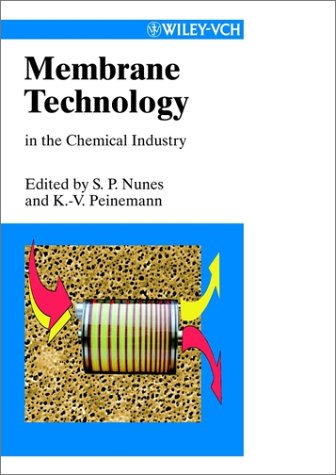
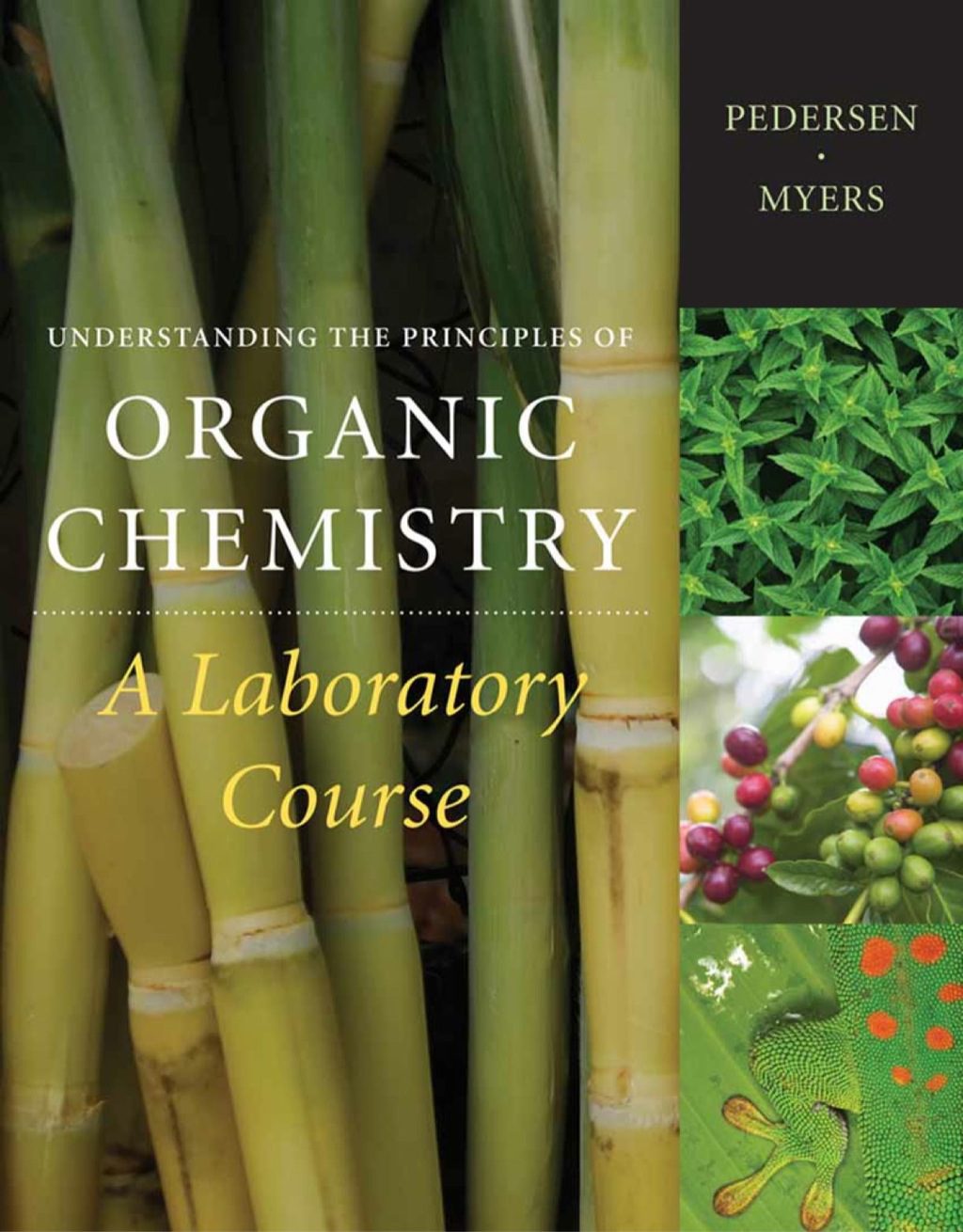
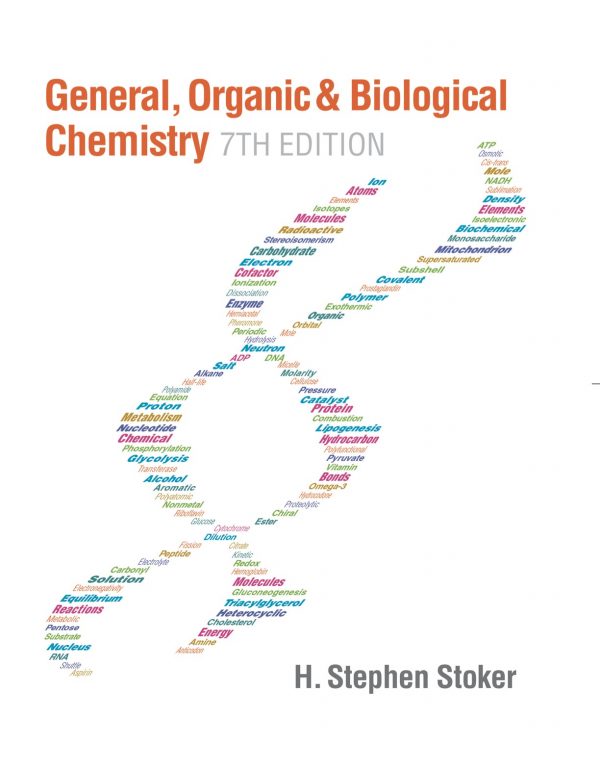
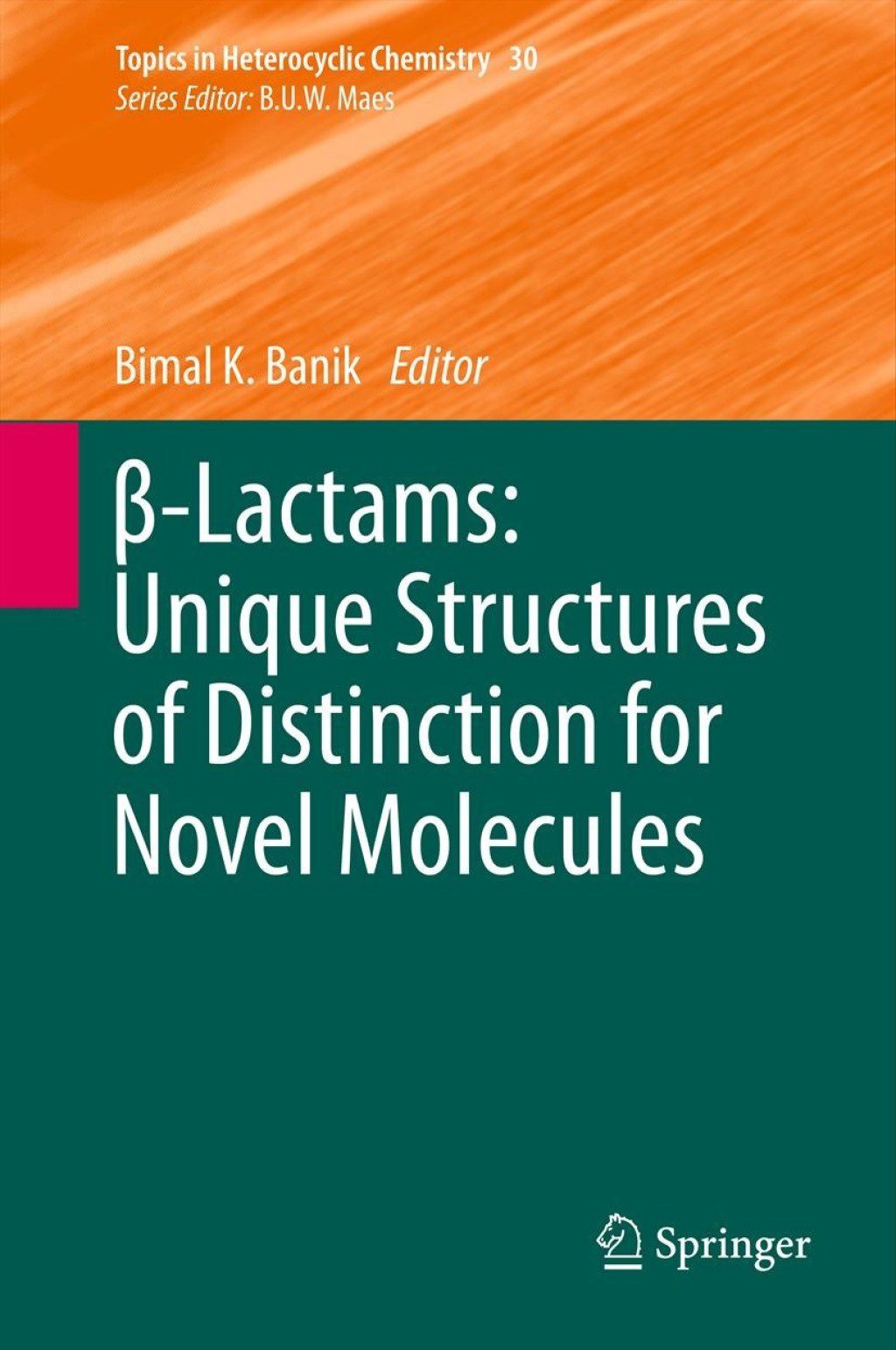
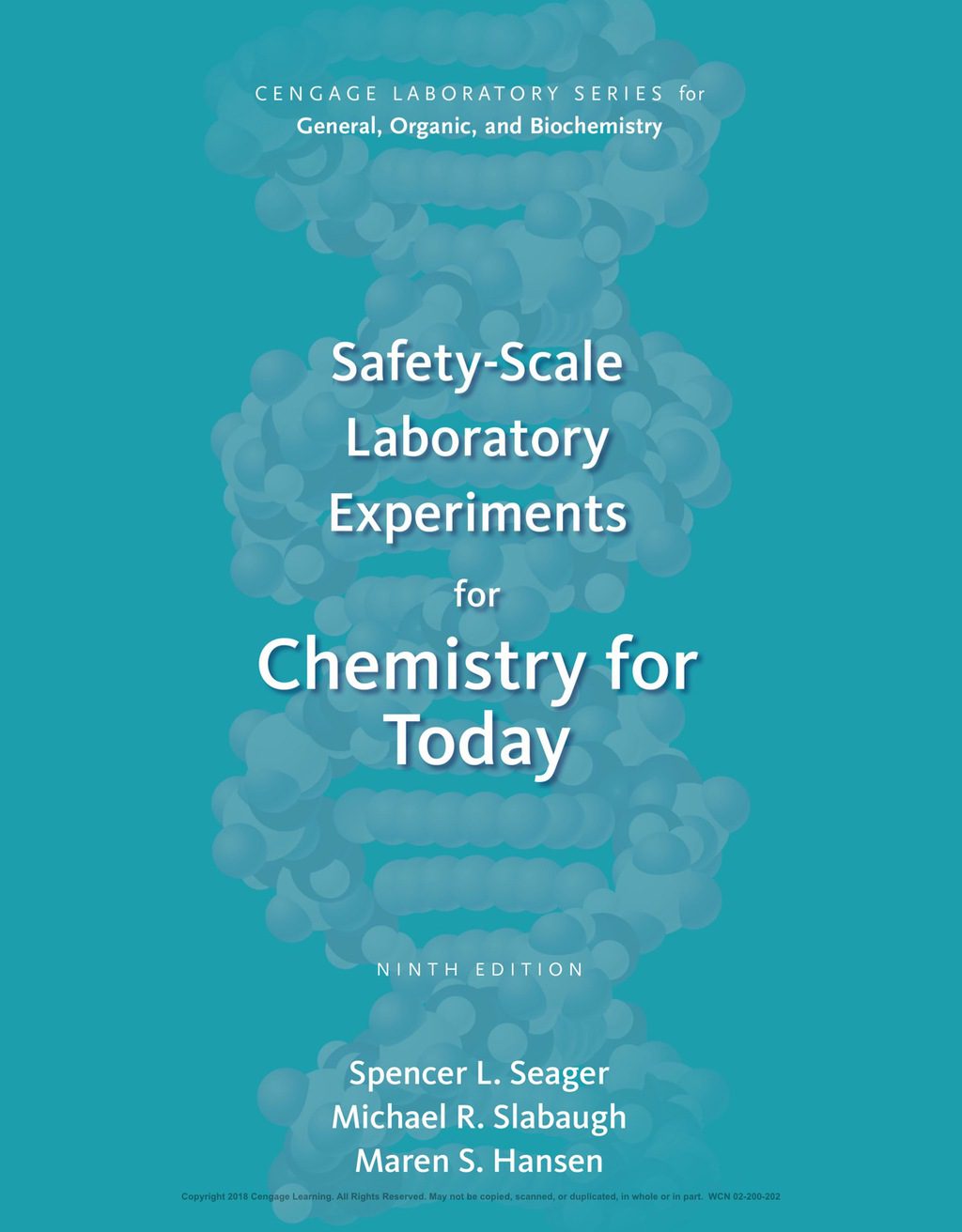
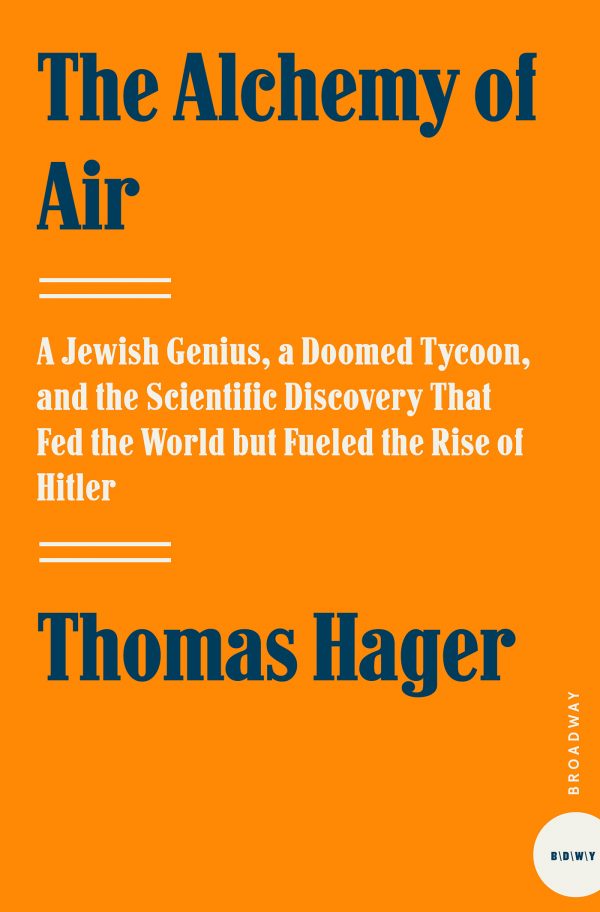
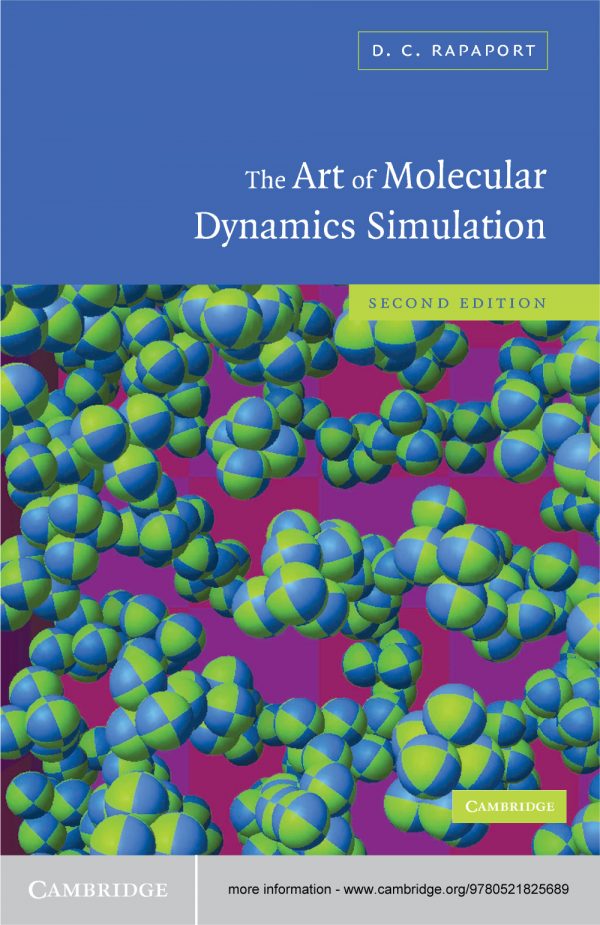
Reviews
There are no reviews yet.